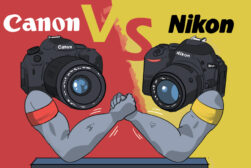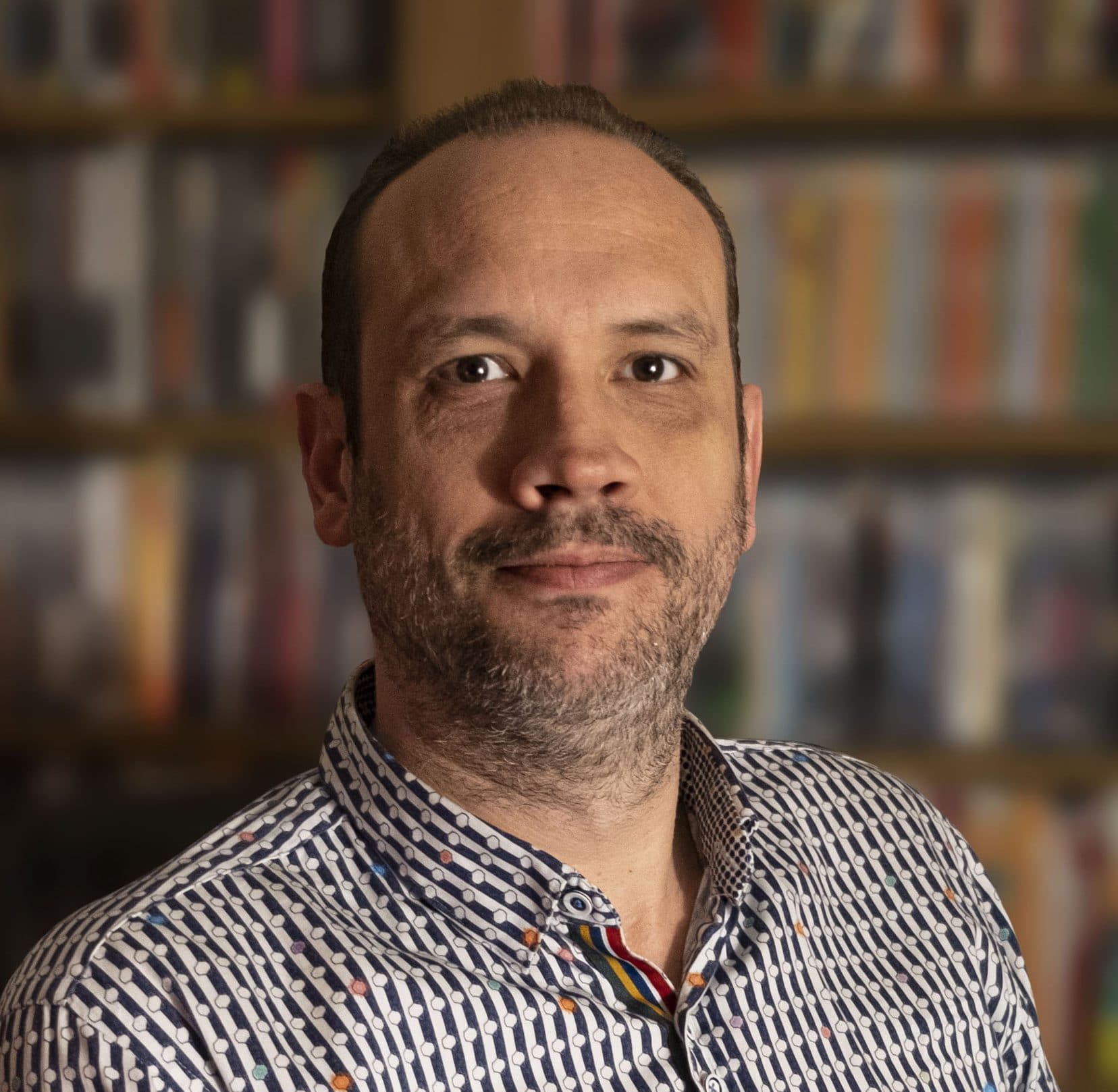
Best DSLR Cameras in 2024: Should You Still Buy a DSLR?
All the best DSLR cameras feature more robust bodies, better battery life and a wider selection of lenses than the best mirrorless cameras. Their ergonomics are usually better too.
We’ve spent hundreds of hours testing all the best DLR cameras of the year to bring you this short list of the top models.
Whether you’re a professional or a beginner, there’s a great DSLR body for you at an affordable price.
Despite what you may have read, DSLRs are far from dead – in fact, in 2022, DSLR sales increased by 123% – DSLRs are still popular for all sorts of photographers.
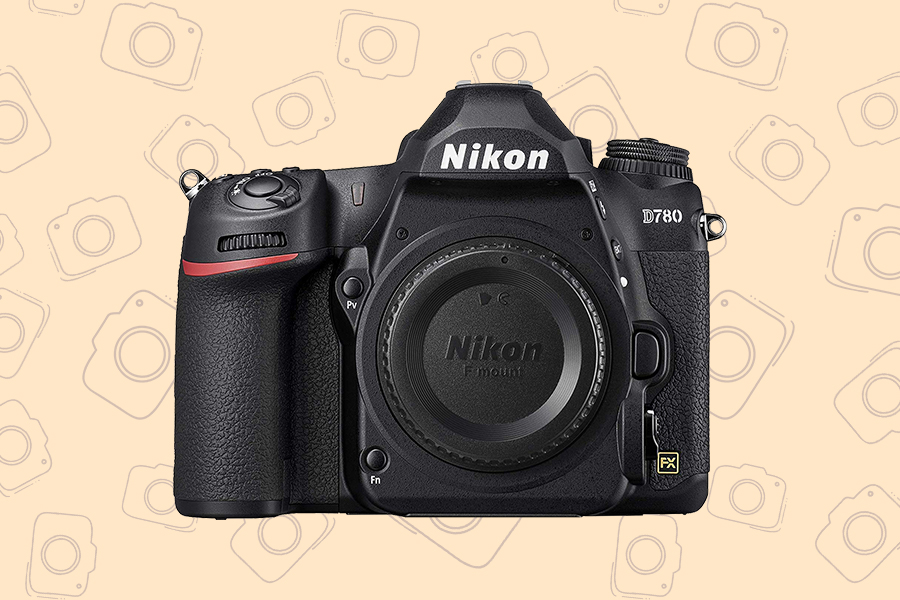
Excellent resolution, dynamic range and high ISO performance with fast autofocus, in an ergonomic and robust body.
The best DSLR cameras feature more robust bodies, better battery life and a wider selection of lenses than the best mirrorless cameras.
Their ergonomics on a DSLR are usually better too, and many people prefer having an optical viewfinder (OVF) as opposed to an electronic one (EVF) – particularly if you wear glasses.
Whatever your reason for researching the best DSLR cameras, we’re sure you’ll find the perfect option below, so let’s get stuck in!
What is the Best DSLR Camera in 2024?
| Image | Product | Features | |
|---|---|---|---|
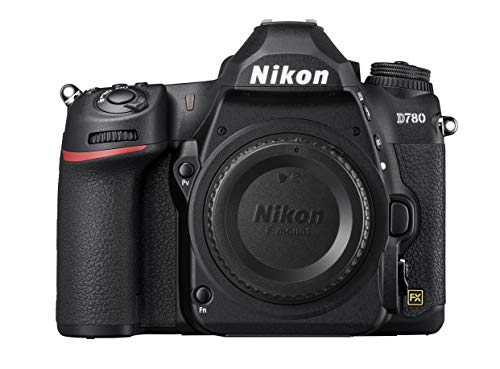 | Nikon D780BEST FOR PROFESSIONALS |
| View Price → |
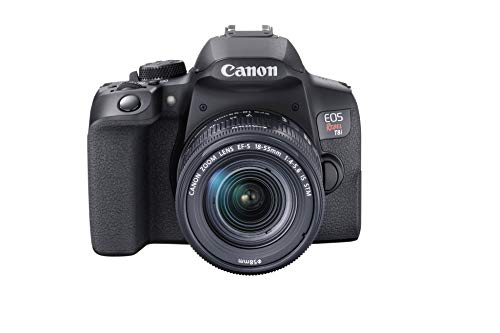 | Canon EOS Rebel T8iBEST FOR BEGINNERS |
| View Price → |
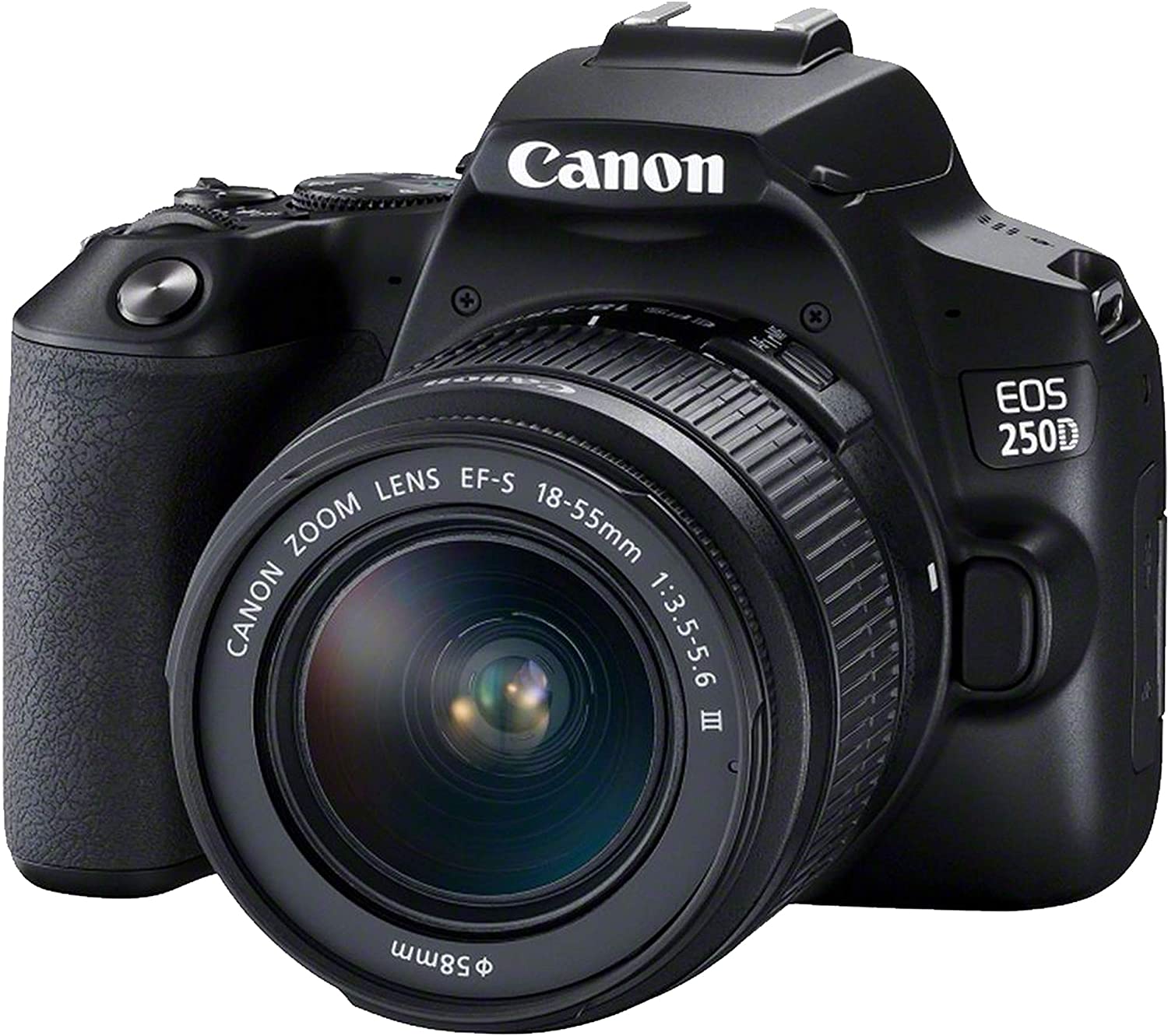 | Canon EOS Rebel SL3 (EOS 250D)BEST BUDGET |
| View Price → |
 | Canon DSLR Camera [EOS 90D]BEST FOR ENTHUSIASTS |
| View Price → |
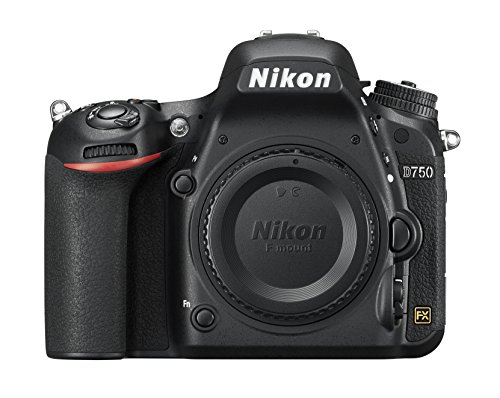 | Nikon D750BEST BUDGET FULL FRAME |
| View Price → |
1. Nikon D780 | Best DSLR Camera for Professional Photography

- Exceptional performance
- Offers uncropped 4K video
- Fast live-view focusing
- Crisp LCD monitor with tilt option
- Large and heavy
- Expensive
Sensor: Full-Frame | Resolution: 24.5 megapixels | Viewfinder: TBA | Monitor: 3.2-inch tilt-angle, touchscreen, 2,359k dots | Autofocus: 51 points | Max frame rate: 6.5fps | Video: 4K at 30 fps | Weight: 840g (1.9 lb)
If you go out and buy DSLR cameras with professional quality performance, this is one of the best ones to get.
Nikon has long been a by-word for professional photography, and their D780 delivers an exceptional image through its full-frame CMOS sensor capable of 24.5 megapixels.
With a maximum video resolution of 4K and the Nikon F lens mount opening up a broad selection of professional-quality lenses, this is a DSLR with the power and versatility needed for professional shoots.
What you get here is in essence a hybrid of a full-frame DSLR and a mirrorless camera, with the Nikon D780 utilising a 273-point on-chip phase detection autofocus system to ensure smooth and responsive performance in any conditions.
The overall design is of the high-quality consumers have come to expect from Nikon; i.e. a robust body with a satisfying grip and a pleasingly hefty weight, made from durable components that are more than capable of withstanding the occasional bang.
Usability is enhanced through its crisp high-resolution tilting touchscreen, so whether you’re shooting video in 4K or firing off stills at 12fps, you’ll get a nice, clear impression of the subjects you’re capturing.
With accurate colours and contrast in a variety of lighting conditions and accurate autofocus, the Nikon D780 delivers impeccable images whether shooting landscapes, wildlife, or fast-paced sporting events.
If you’re looking for a great alternative to Nikon’s D780, the D850 is well worth considering, although for us the D780 gives you a little more bang for your buck, and is the best overall DSLR camera for professional photography.
Resources
2. Canon 5D Mark IV | Also Great for Professionals

- Top-tier sensor performance
- Superb autofocus system
- Decent responsive touchscreen
- Burst shooting at 7fps
- Limited 4K video options
- Heavy full-frame camera
Sensor: Full-Frame | Resolution: 30.4 megapixels | Viewfinder: TBA | Monitor: 3.2-inch fixed, touchscreen, 1,620k dots | Autofocus: 61 points | Max frame rate: 7fps | Video: 4K at 30 fps | Weight: 800g (1.8 lb)
Canon’s entries in the world of full-frame DSLR cameras include the Canon DSLR 5D Mark IV, which retails for around the same price as the Nikon D780 and is a great alternative for those who prefer the range of lenses and accessories Canon has to offer.
Capable of capturing stills at 30.4MP and shooting 4K DCI video, the Canon 5D Mark IV remains a stunning DSLR that is still used by professionals to this day, despite being released on the market over five years ago.
All-round performance is comparable to their Nikon counterparts, with excellent dynamic range, crisp resolution, and solid performance in low light and other more challenging shooting conditions.
On-chip digital-to-analogue conversion offers improved noise performance, while the Dual Pixel Raw technology allows pros to really fine-tune the images for the best possible sharpness.
As well as its excellent optical viewfinder, the Canon D5 Mark IV features a rear screen with touchscreen functionality, which can be used for easy menu navigation as well as for reviewing your images and videos.
Video capture can be achieved at 4096 x 2160 pixels, with the option to extract 8.8MP images from 4K video, although for the full range of video mode options you’ll need to switch to 1080p, for instance, to shoot footage at 120 frames per second.
With its multiple ports for headphones, microphones, and HDMI cables, as well as dual memory card slots and a built-in GPS unit, Canon’s 5D Mark IV DSLR is another sterling product for professional photographers and amateurs with cash to spare.
Resources
3. Canon EOS Rebel T8i | Best DSLR Camera for Beginners
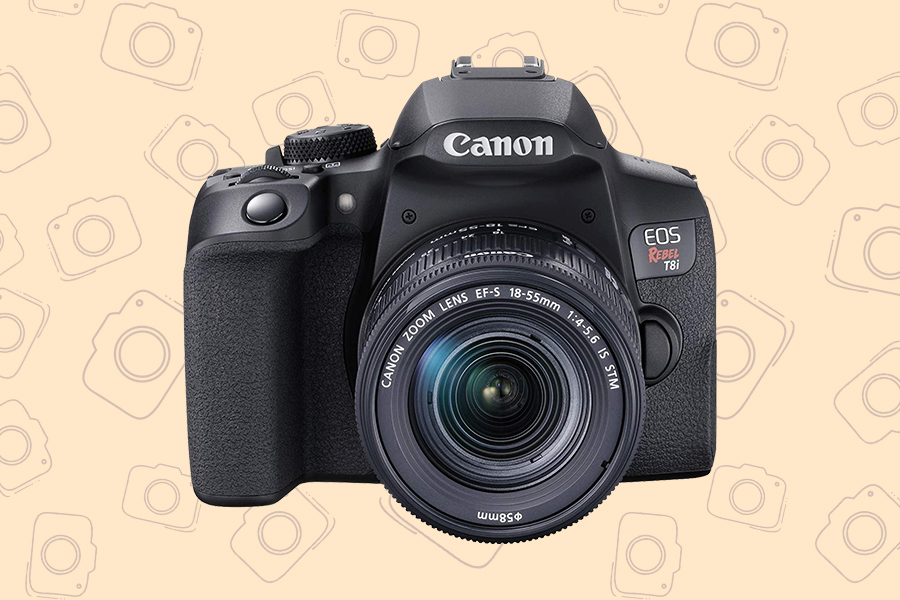
- An affordable entry-level DSLR
- Fast auto-focus
- Nice image quality
- Impressive battery life
- Build quality is a little flimsy
- Small viewfinder
Sensor: APS-C | Resolution: 24.1 megapixels | Viewfinder: TBA | Monitor: 3-inch tilt-angle, touchscreen, 1,040k dots | Autofocus: 45 points | Max frame rate: 7fps | Video: 4K at 24 fps | Weight: 515g (1.1 lb)
Non-professional photographers who want to get their foot in the DSLR door can opt to go for one of Canon’s cheaper cameras, the EOS Rebel T8i (850D), a popular entry-level model with some solid specs and features.
Many of the features you’ll find on higher-end models are here, from the long battery life and optical viewfinder to the vari-angle touchscreen and decent autofocus, albeit not quite to the same standard as its more expensive counterparts.
Canon appreciates how the EOS Rebel T8i will appeal largely to those beginning their photography journey and has seen fit to include a range of useful guides built into the camera to help you get your head around the ins and outs of its functionality.
This extends to its overall easy-to-use design which makes it suitable for beginners, with 24MP photos as well as video footage options up to 4K, although shooting at this resolution is cropped.
The inclusion of headphone and microphone ports, and the option to shoot video in portrait orientation, make Canon T8i a great option for those looking to shoot video for social media, for instance producing videos for their TikTok channel.
Auto-focus is surprisingly fast considering the price point, so if you’re using this to take pictures at a family party or spring event it’ll perform well, delivering pleasing images and capturing moments with vibrant and sharp colours.
While serious photographers will be put off by some of the EOS Rebel T8i’s performance shortcomings, beginners looking for their first DSLR camera will find this easy to use, and capable of fine performance.
Resources
4. Nikon D5600 | Also Great for Beginners

- Beginner-friendly user interface
- Superb image quality
- Handy touchscreen interface
- Lightweight body
- Video limited to 1080p
- SnapBridge needs improving
Sensor: APS-C | Resolution: 24 megapixels | Viewfinder: TBA | Monitor: 3.2-inch tilt-angle, touchscreen, 1,037k dots | Autofocus: 39 points | Max frame rate: 5fps | Video: 1080p at 60 fps | Weight: 465g (1 lb)
Nikon has released a series of entry-level DSLRs over the years, with the D5600 among its more popular models, delivering exceptional images for the price through an easy-to-use interface.
The camera comes with a 39-point autofocus system, capable of 24.2MP images through its APS-C CMOS sensor, with the additional option of shooting movies in 1080p resolution.
Newbies will find the handling and interface easy to get their heads around in no time at all, with Nikon’s approach to design intuitive and logical.
There’s a useful touchscreen to help coordinate set-up and shooting modes, as well as reviewing images and videos instantly and controlling the camera’s autofocus.
The overall image and video quality is impressive, especially considering the relatively low price point, with great detail in low light conditions even when ramping up the ISO, and a generally impressive dynamic range.
Basic functions are complemented with some cool additional features to broaden your photography horizons, with the timelapse movie feature, in particular, standing out and giving users scope to have some fun with the camera.
With the only real downside to the Nikon D5600 being its lack of 4K mode for video, overall it’s a superb low-budget DSLRT that casual photographers will find plenty to get excited about.
Resources
5. Canon EOS Rebel SL3 (EOS 250D) | Best Budget DSLR Camera
- Lightweight yet durable build
- Intuitive controls
- Vari-angle touchscreen
- Max video resolution 4K
- Autofocus options are limited
- Burst speed isn’t great
Sensor: APS-C | Resolution: 24.1 megapixels | Viewfinder: TBA | Monitor: 3-inch tilt-angle, touchscreen, 1,040k dots | Autofocus: 9 points | Max frame rate: 5fps | Video: 4K at 24 fps | Weight: 449 g (0.99 lb)
Photographers on a budget who are looking for a great DSLR should consider the Canon EOS Rebel SL3, a crop sensor camera that features a 24.1MP CMOS sensor as well as a DIGIC 8 image processor.
While some may find the limited autofocus points off-putting (there are just nine points available to use), the Canon EOS Rebel SL3 nevertheless produces pictures with sharp and vibrant image quality whether you’re using a standard kit lens or something more expensive.
As well as rich and detailed images, this interchangeable lens camera is also capable of shooting 4K video up to 60 frames per second, although it does so with a noticeable crop of 1.54x.
Perhaps the most striking feature of the Canon EOS Rebel SL3 is just how lightweight yet satisfying the camera body is, as well as the relatively small size when compared to some of its closest rivals.
This small size and weight make it a great camera choice for those who want something exceptionally portable and discreet, without sacrificing the overall performance and versatility expected from a great DSLR.
There are plenty of ports for accessories including microphones, headphones, flashes, and a decent range of options for memory cards and other peripherals, although it should be noted that the hot shoe isn’t compatible with third-party flash units.
The Canon EOS Rebel SL3’s compact size and range of features make this one of the best Canon DSLR cameras for photographers looking for a pocket-sized addition to their collection, as well as those looking to get into photography without breaking the banks.
Resources
6. Nikon D3500 | Another Great Budget Option
- Battery life of 1,550 shots
- Useful guide mode for beginners
- Superb image quality
- In-camera RAW processing
- The LCD screen is fixed
- Lacks a 4K video option
Sensor: APS-C | Resolution: 24.2 megapixels | Viewfinder: TBA | Monitor: 3-inch fixed, 921k dots | Autofocus: 11 points | Max frame rate: 5fps | Video: 1080p at 60 fps | Weight: 365g (0.80 lb)
One of the most popular and enduring budget DSLR cameras manufactured by Nikon is the D3500, combining a traditional setup with a broad selection of manual photography options to explore.
Built with Nikon’s trademark solid construction, the resilient body is matched with a solid camera system designed to ease newbies into the format, with an intuitive interface and workflow.
The battery life for the D3500 is excellent, delivering up to 1,550 shots from a single charge, making it an ideal choice for budget-minded photographers who are mostly shooting while on the go.
Performance is of the high standard expected from Nikon, with the 24.3-MP APS-C image sensor combined with the 11-point phase autofocus ensuring excellent image quality for a beginner DSLR.
It lacks the flip-out screen found on some of the best DSLR cameras, although the optical viewfinder is more than satisfactory for composing the vast majority of shots you might want to take.
There are also some limitations to the D3500 for those interesting in shooting video, with a video resolution capped at 1080p and no input for a microphone, so if you’re after an entry-level DSLR for vlogging you might want to look elsewhere.
But for those looking for excellent still photography performance in an affordable camera, the Nikon D3500 is one of the best digital cameras in the price range, compatible with a wide range of Nikon lenses to experiment with.
Resources
7. Canon EOS 90D | Best DSLR Camera for Enthusiasts

- Excellent high-resolution sensor
- Great battery life
- Fully articulated LCD touchscreen
- Uncropped 4K video
- Only one memory card slot
- Lacks image stabilisation
Sensor: APS-C | Resolution: 32.5 megapixels | Viewfinder: TBA | Monitor: TBA | Autofocus: 3-inch tilt-angle, 1,040k dots | Max frame rate: 10fps | Video: 1080p at 59 fps | Weight: 701g (1.5 lb)
A great DSLR camera for those on a larger budget is the Canon EOS 90D, which boasts exceptional battery life, a fantastic high-resolution sensor, and a wonderful ergonomic body design with joystick control.
While the Canon EOS 90D might set you back more than Canon’s budget-friendly models, it’s nevertheless a user-friendly DSLR that relative newcomers won’t struggle to come to terms with.
The high-resolution 32.5-megapixel sensor delivers outstanding performance, and you also get uncropped 4K video resolution to boot, all processed through the latest imaging engine from Canon.
This resolution gives you plenty of scope for cropping images in post-production, zooming in without compromising the overall quality, and delivering more all-around versatility when shooting images.
Canon’s Digic 8 processor also delivers greater performance on burst speed, with a maximum burst of up to 11 frames per second when using Live View, making it easier to snap those difficult-to-capture moments.
Wi-Fi and Bluetooth connectivity brings the camera into the social media age and allows users to connect to their smartphones and other mobile devices to share images to their Instagram and Facebook accounts with ease.
Overall, the Canon EOS 90D’s solid image sensor, continuous shooting, and excellent battery life make it one of the best Canon cameras for photography enthusiasts after an alternative to the latest mirrorless cameras.
Resources
8. Nikon D7500 | Also Great for Enthusiasts
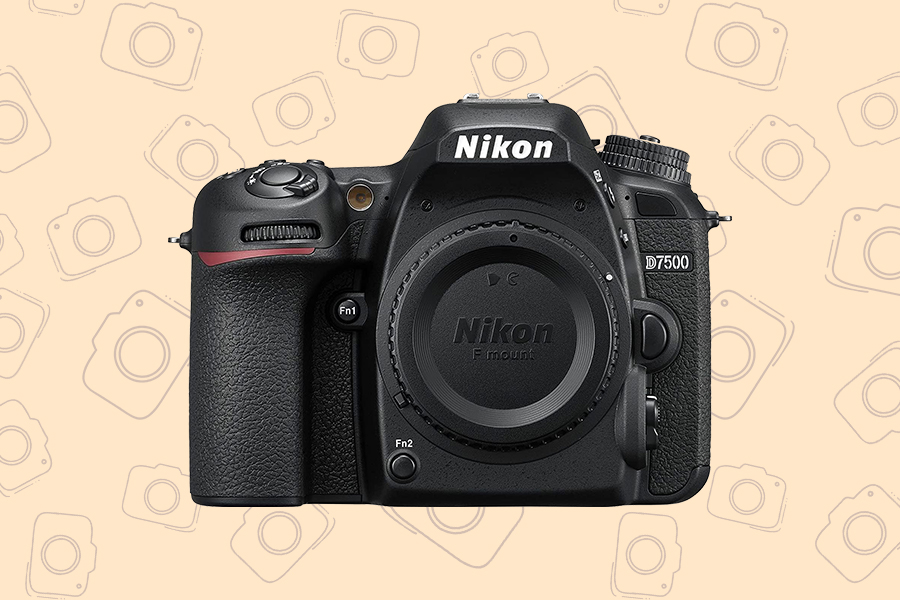
- Excellent processor and sensor
- Touchscreen with tilt
- Comprehensive autofocus system
- Great high-ISO performance
- Live View focus could be better
- Cropped 4K video
Sensor: APS-C | Resolution: 20.9 megapixels | Viewfinder: TBA | Monitor: 3.2-inch tilt-angle, touchscreen, 922K dots | Autofocus: 51 points | Max frame rate: 8fps | Video: 4K at 30 fps | Weight: 720g (1.59 lb)
If you’d prefer Nikon’s alternative to the Canon EOS 90D, the Nikon D7500 offers similar specifications at a similar price point, with an excellent sensor and processor housed in a robust camera case.
It’s a solid all-around performer that can be picked up for a reasonable price, with features including 8fps burst shooting and 4K video to make it a competitive alternative to many of the newer camera releases.
One of Nikon’s higher-end APS-C models, the Nikon D7500 is excellent at shooting action through its optical viewfinder and features the extended battery life that makes DSLRs appealing for many photographers.
It also boasts a 3.2-inch tilt-angle touchscreen featuring 922,000 dots which sits flush against the camera’s body, although users should be mindful of the slight drop in autofocus performance when using Live View.
Speaking of autofocus, when using the optical viewfinder the 51-point autofocus system is impressive, responding quickly when shooting video and images to help deliver sharp results.
While there’s only one memory card slot available with the Nikon D7500, the inclusion of SnapBridge technology allows users to remain permanently linked up to their smart devices via Bluetooth, giving them vastly improved space for saving their photos.
The Nikon D7500 is firm evidence that the DSLR format isn’t disappearing any time soon, with a combination of versatile controls, high-quality images and videos, and affordability making it a worthwhile addition to any photographer’s setup.
Resources
9. Nikon D750 | Best Budget Full Frame DSLR Camera

- Superb 24MP full-frame sensor
- Tilt-angle LCD touchscreen
- Lightweight body
- 51-point autofocus system
- Video recording limited to 1080p
- Slow live view AF
Sensor: Full-Frame | Resolution: 24.3 megapixels | Viewfinder: TBA | Monitor: 3.2-inch tilt-angle, 1,229k dots | Autofocus: 51 points | Max frame rate: 6.5fps | Video: 1080p at 60 fps | Weight: 840g (1 lb)
If you have the additional budget to upgrade to a full-frame DSLR camera and want a professional-level autofocus system included for your cash, the Nikon D750 is an affordable full-frame option to consider.
Making the jump from an APS-C sensor DSLR to a full-frame can be an eye-opening experience for any photographer, and with the Nikon D750 you’ll appreciate a significant improvement in overall image reproduction and performance.
The D750 comes with a 24.3-megapixel full-frame CMOS sensor and an Expeed 4 processing engine, and sports an anti-aliasing filter over the sensor for enhanced results.
There’s also an excellent autofocus module boasting an impressive 51 points, including a Group Area AF mode for when shooting small subjects against a distracting background – despite being several years old, the AF performance is still impressive in the D750.
Videographers might be put off by the 1080p limitations (this is a camera that was originally released back in 2014, after all), but you will get 60fps, and there are ports for headphones, and microphones, as well as various modes such as white balance and flat picture control.
When shooting in video of Live View modes, the Nikon D750 brings up a useful Zebra pattern display to indicate potential image burnout, helping to deliver the best results.
Additional effects such as Night Vision, Colour Sketch, and Miniature Effect act as the icing on the cake of this excellent full-frame DLSR camera, which still holds its own in spite of its relatively old age.
Resources
10. Canon 6D Mark II | Another Great Budget Full Frame Option
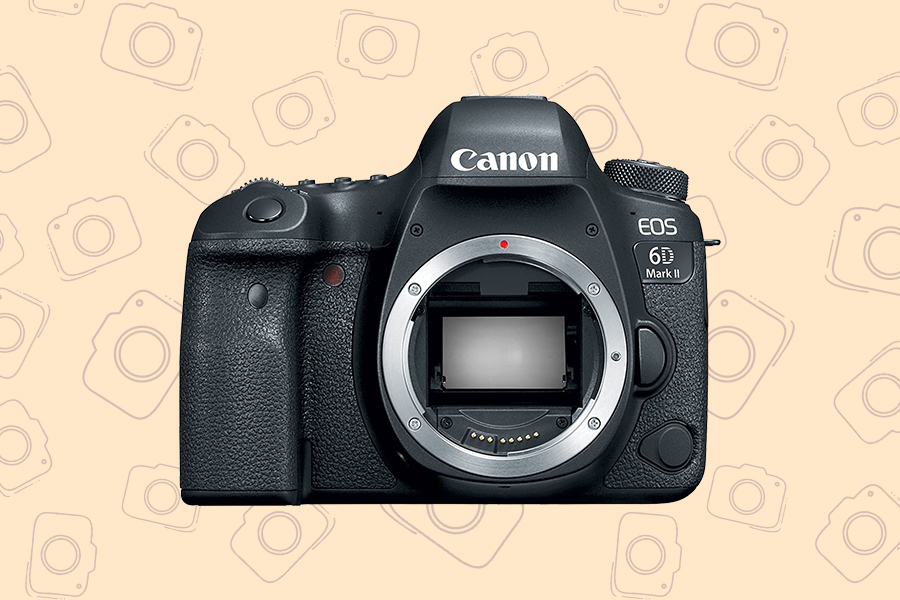
- Vari-angle touchscreen
- Superb build and handling
- Great Live View focusing
- Comprehensive connectivity
- Lacking 4K video
- Dynamic range could be better
Sensor: Full-Frame | Resolution: 26.2 megapixels | Viewfinder: TBA | Monitor: 3-inch tilt-angle, 1,040k dots | Autofocus: 45 points | Max frame rate: 6.5 fps | Video: 1080p at 60 fps | Weight: 765g (1.7 lb)
A budget alternative to Nikon’s full-frame DSLR is the Canon EOS 6D Mark II, which comes loaded with features, performs under a broad range of challenging conditions, and delivers great images and video.
The 26.2MP full-frame CMOS sensor offers a boost in resolution over the camera’s predecessors, with the additional improvement in ISO sensitivity opening up the scope for clear images in a range of low light conditions.
It also comes with Canon’s DIGIC 7 processing engine, which is much faster than other Canon cameras for better handling of image noise and leading to an overall improvement in the sharpness of pictures.
Autofocus performance is quick and accurate, with the 45-point system combined with continuous shooting making this an excellent camera for shooting fast action without having to worry about the results.
While the video mode doesn’t feature 4K options, shooting footage in 1080p gives great results, and like the Nikon D750, there’s the option to shoot at 60 frames per second.
In terms of connectivity, the Canon EOS 6D Mark II comes with USB-2 and Type-C HDMI ports, an N3-type remote input, and a 3.5mm microphone jack, with no headphone jack available for monitoring your audio.
If you’re after a solid, high-performance full-frame DSLR camera with access to a wide range of lenses, the Canon EOS 6D Mark II will deliver reliable and consistent results.
Resources
Which is Better: Mirrorless Cameras or DSLR Cameras?
The debate over mirrorless cameras versus DSLR cameras is one that continues to play out in both the amateur and professional realms.
Both formats have their strengths and weaknesses that make them appealing to photographers of different stripes, from how lightweight the camera bodies are to battery life expectations and the range of lenses to choose from.
Mirrorless cameras have increased in popularity thanks to their lightweight structure and silent operation, with a higher overall standard in video quality even with cheaper models.
That said, the advantages of DSLR cameras ensure they still have a place in 2024, with their wide selection of interchangeable lenses, longer battery life, and optical viewfinders retaining their appeal among many pro and amateur photographers.
Ultimately, the decision of whether to opt for a mirrorless camera or DSLR depends on a range of factors, including shooting conditions, budget, quality requirements, and the compatibility of lenses and other accessories.
Frequently Asked Questions
What brand is best for DSLR?
There is a wide range of camera manufacturing brands that produce DSLR cameras, with well-known companies such as Canon and Nikon tending to dominate the market with a broad selection of models to choose from.
Lesser-known camera brands such as Pentax and Olympus also manufacture DSLRs, as well as companies like Sony and Panasonic that are more versatile in their output, producing everything from televisions and hi-fis to games consoles.
While Canon and Nikon have a solid reputation as manufacturers of DSLRs, what’s best is subjective, and the answer is influenced by factors including budget, lens requirements, and other considerations.
Is it worth buying DSLR now?
While many of the major camera brands are beginning to leave the DSLR format behind in favour of mirrorless cameras, there are still good reasons why you should consider investing in the DSLR format.
DSLRs offer users an optical viewfinder for a “naked eye” view of their subjects which some photographers prefer, and since they have been around for a while there’s a great selection of compatible lenses to choose from.
They can also be much cheaper than their mirrorless counterparts, with plenty of models to choose from on the second-hand market, and lenses and other peripherals generally costing less.
Finally, many DSLR cameras deliver a longer-lasting battery life than their mirrorless counterparts, so if this is something that matters to you when you head out for a long day’s shooting in the wilderness, it’s something to bear in mind.
Are DSLR cameras better than iPhone?
Shooting images on mobile devices such as the iPhone has become a viable option in recent years, with Apple’s flagship iPhone even being used to shoot movies such as the award-winning film, Tangerine.
With that said, the image and video quality from a DSLR is almost certainly going to be an improvement over an iPhone, since these cameras have larger sensors and are designed to capture images at greater resolution.
While a DSLR camera lacks the slim, discreet portability of an iPhone – and Apple’s flagship mobile is certainly capable of capturing great pictures – overall you can expect to get better results when shooting with a DSLR.
Is DSLR still relevant?
Yes, DSLRs are still the go-to cameras for many photojournalists and sports photographers.
What is the difference between DSLR and SLR?
While both have mirrors and viewfinders, the difference between the two is that DSLRs capture images digitally, while SLRs use films.
Is mirrorless the future?
Mirrorless cameras could be the future. Their compact design and ever-advancing technology appeal to both casual and professional photographers.
Is DSLR or SLR better?
DSLRs might be better for learning photographers because of their live preview features. Plus, they prevent newbies from wasting tons of film. However, SLR might appeal to more experienced shooters because of its slightly better image contrast and tone.
Is Canon discontinuing DSLR?
No, Canon executives confirmed that the company will continue producing DSLRs as long the demand is there. However, the company may discontinue developing new models.
Is Nikon d3100 a DSLR camera?
Yes, the Nikon d3100 is a DX-format DSLR F-mount camera. Check out the best Nikon D3100 lenses.
Will DSLR cameras become obsolete?
Yes, camera makers might stop developing and producing DSLRs and focus more on the production of mirrorless cameras.
Will phone cameras ever be as good as DSLRs?
It’s a possibility, especially if manufacturers stop developing new technologies for DSLRs.
Are DSLR cameras outdated?
No, there’s still a demand for its technology. However, mirrorless and smartphone cameras have been gaining traction in recent years.
Best DSLR Cameras: Final Recommendations
I used a Nikon D700 for 2 years, before switching to a D600, then to a D610, a D750 and finally a D850.
In between, I also dabbled with a Canon 5D Mark II, 6D, 7D and various other entry-level DSLRs.
Even though I now use a Sony mirrorless camera, I’ve kept my favourite Nikon DSLR camera body (the D750), and miss shooting professionally with it.
Shooting with a mirrorless camera is great, but the experience doesn’t come close to the feeling most photographers get when using DSLRs.
Whether you want a full-frame camera or a crop sensor, I hope you find a DSLR that’s right for your needs. Happy shooting!

Excellent resolution, dynamic range and high ISO performance with fast autofocus, in an ergonomic and robust body.









